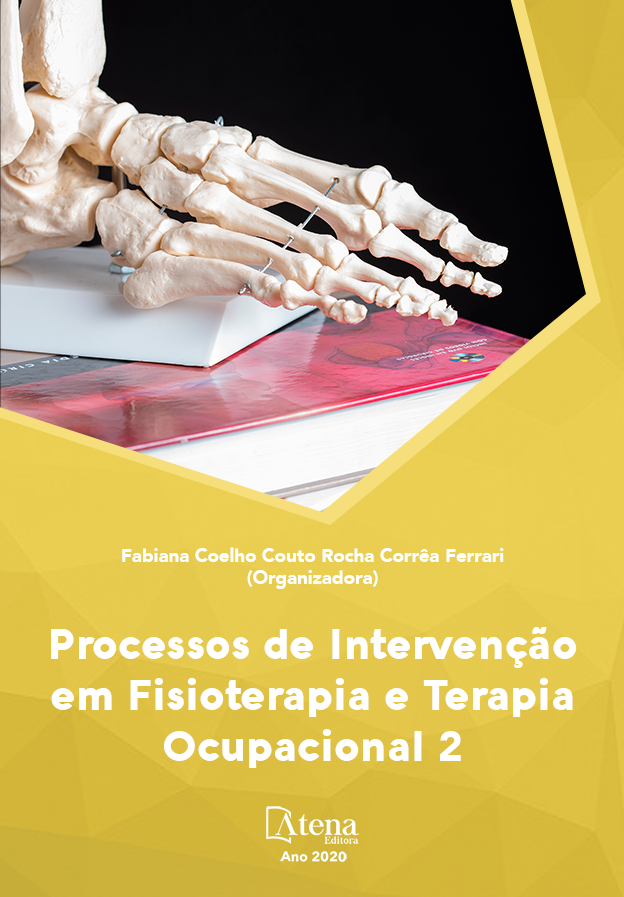
COMPLICAÇÕES SECUNDÁRIAS À PRESENÇA DE DOR E ESPASTICIDADE EM PACIENTES NEUROLÓGICOS
RESUMO: O índice dos distúrbios neurológicos tende a subir gradativamente pelo aumento da expectativa de vida da população, sendo o Acidente Vascular Encefálico (AVE) uma das principais causas de internações, deixando sequelas na grande maioria dos pacientes. Como consequência das lesões neurológicas, o aparecimento da espasticidade torna o indivíduo limitado para realizar certas tarefas do dia a dia, desencadeando o comprometimento da força muscular, controle motor, equilíbrio e até mesmo gerando o aparecimento de deformidades e dor. O objetivo deste estudo foi avaliar a presença de dor e sua intensidade em pacientes com o quadro clínico de espasticidade, bem como sua influência sobre a capacidade funcional nesses indivíduos espásticos. Trata-se de um estudo quantitativo descritivo, realizado com 12 pacientes espásticos por meio de uma entrevista e avaliação fisioterapêutica contendo a Escala Visual Analógica (EVA) para a mensuração da dor, a Escala de Ashworth Modificada para graduar a espasticidade, o Índice de Barthel para identificar o grau de independência e o Teste de Força Muscular para quantificá-la. Verificou-se que os membros superiores e inferiores contralaterais à lesão encefálica apresentaram o tônus muscular aumentado, no entanto, o grau de força muscular mostrou-se reduzido. Quanto ao diagnóstico, todos foram acometidos por AVE e apresentaram a média de dor com menor intensidade nos membros superiores (EVA=5,2) e maior nos membros inferiores (EVA=5,7). Além disso, foi possível observar que a força muscular reduzida e a presença de dor, como consequências da espasticidade, são fatores limitantes na realização das Atividades de Vida Diária (AVD’s).
COMPLICAÇÕES SECUNDÁRIAS À PRESENÇA DE DOR E ESPASTICIDADE EM PACIENTES NEUROLÓGICOS
-
DOI: I 10.22533/at.ed.44720071216
-
Palavras-chave: Atividades Cotidianas, Dor, Espasticidade Muscular, Fisioterapia.
-
Keywords: Activities of Daily Living, Pain, Muscle Spasticity, Physical Therapy.
-
Abstract:
ABSTRACT: The index of neurological disorders tend to increase gradually due to an increase in the life expectancy of the population, with stroke being one of the main causes of hospitalization, causing sequels in the vast majority of patients. As a consequence of the neurological lesions, the onset of spasticity makes the individual limited to perform some daily tasks, triggering the impairment of muscle strength, motor control, balance and even generating the appearance of deformities and pain. The objective of this study was to evaluate the presence of pain and its intensity in patients with clinical symptoms of spasticity, as well as its influence on the functional capacity in these spastic individuals. This is a descriptive quantitative study performed with 12 spastic patients through an interview and physical therapy evaluation containing the Visual Analogue Scale (VAS) for pain measurement, the Modified Ashworth Scale to measure spasticity, the Barthel Index to identify the degree of independence and the Muscular Strength Test to quantify it. It was verified that the upper and lower limbs contralateral to the brain lesion presented increased muscle tone, but the degree of muscular strength was reduced. Regarding the diagnosis, all patients were affected by stroke and presented mean pain with lower intensity in the upper limbs (VAS= 5.2) and higher in the lower limbs (VAS= 5.7). In addition, it was possible to observe that the reduced muscle strength and the presence of pain, as a consequence of the spasticity, are limiting factors in the accomplishment of the activities of daily living.
-
Número de páginas: 15
- Juliana Morais Limeira
- Samilly Ariany Corrêa Morau
- Kelly Cristina Mota Braga Chiepe
- Fernanda Cristina de Abreu Quintela Castro
- Bruno Maia Costa


